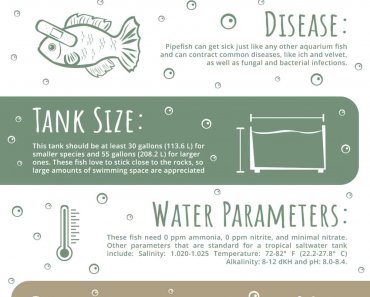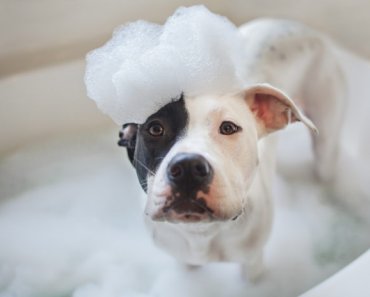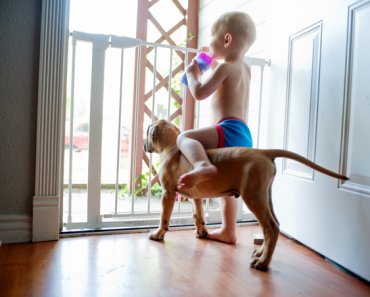We hear a lot about biofilms these days, but what exactly are they, and what impact can they have on your dog or cat’s health and well-being?
Biofilms are a collective of one or more types of reproducing microorganisms that form a colony or community. These microorganisms can include bacteria, viruses, algae, yeast, protozoa, and fungi. Biofilms exist everywhere in our environment, including on metals, plastics and soil particles, and in and on our bodies and those of our dogs and cats. We encounter biofilms daily in the form of dental plaque, the gunk that clogs household drains, and the slimy coating that forms on unwashed water or food bowls. Although biofilms are a normal occurrence, they can also be harmful to both humans and animals. Read on to learn more about biofilms, and how to protect your dog or cat from the hazards they can present.
HOW BIOFILMS FORM
A biofilm community forms when certain microorganisms adhere to the surface of an object in a moist environment, and begin to reproduce. The microorganisms secrete a slimy glue-like substance that allows them to form an attachment to any surface. The biofilm community is held together by extracellular polymeric substances (sugary molecular strands), DNA, and proteins, which allow the organisms to resist attacks that would destroy individual cells if they were not part of a colony. Biofilm communities can develop within hours.
Note: Over 500 bacterial species have been identified in typical dental plaque biofilms.
BIOFILMS ARE FOUND IN HEALTHY ANIMALS
Biofilms are part of the normal complement of microbes in many healthy animals. Consider the rumen, the largest compartment of the cow’s stomach. Bacteria colonize the digestive tract of a calf two days after it is born. Within three weeks, the inside of the rumen becomes home to 30 species of bacteria, 40 species of protozoa, and five species of yeast. This biofilm makes up the population of microbes in “green tripe”, which we give to animals to provide them with probiotics.
Consider the rumen, the largest compartment of the cow’s stomach. Bacteria colonize the digestive tract of a calf two days after it is born. Within three weeks, the inside of the rumen becomes home to 30 species of bacteria, 40 species of protozoa, and five species of yeast. This biofilm makes up the population of microbes in “green tripe”, which we give to animals to provide them with probiotics.
Note: Biofilms can be any color, or even colorless. They can have a putrid smell that is much more easily sensed by dogs and cats with their strong olfactory abilities.
WHEN BIOFILMS CAUSE PROBLEMS
Some biofilms can be very harmful and have been associated with several human diseases and conditions, including valvular endocarditis, periodontitis, delayed wound healing, and chronic wound infection. The CDC estimates that up to 70% of human bacterial infections in the Western world are caused by biofilms.
The bacteria within a biofilm are up to 1,000 times more resistant to antibiotics and disinfectants than bacteria found outside a biofilm. Specialized survivor cells, called “persisters”, are slow-growing variants that exist in every bacterial population; they are genetically programmed to survive environmental stress, including exposure to antibiotics. The persister cells generate a toxin that drives the bacterial cells into a dormant state. Once antibiotic therapy has ceased, the persisters give rise to a new bacterial population, resulting in a relapse of the biofilm infection. This can explain why infections often reoccur after antimicrobial therapy.
Research suggests that white blood cells, antibodies, and other immune components are also ineffective against biofilms. Patients with biofilm-based infections can heal, but poor nutrition, oxygenation or blood perfusion, or white cell dysfunction, can prevent healing. Amazingly, biofilms have even been found in the disinfectants used to eradicate them! When threatened with cleaning agents, the biofilm cells begin rapidly changing; the outer layer of the biofilm becomes thicker to protect the organisms inside.
Note: The National Institutes of Health estimates that 80% of refractory infections in both humans and animals are attributable to biofilm colonies.
HOW HARMFUL BIOFILMS IMPACT YOUR DOG OR CAT
Biofilms can be extremely hazardous to companion animals and their people.
- They can contain harmful bacteria such as coli, Pseudomonus aeruginosa, Salmonella typhimurium, Chlamydia pneumoniae, Clostridium difficile Clostridium perfringens, Serratia marcescens (the pink biofilm found in bathrooms), Staphylococcus aureus, Staphylococcus epidermidi, Enterococcus faecium, Klebsiella pneumophila, Listeria monocytogenes, and many others.
- The biofilm also produces enzymes that make the bacteria resistant to antibiotics. Two of these enzymes are aminoglycoside modifying enzymes (AMEs) and beta-lactamase (BL).
- Acitenobacter baumannii is resistant to aminoglycosides and is responsible for many serious infections found in hospital settings.
- Salmonella, coli, Enterococcus, Campylobacter and Staphylococcus are resistant to beta-lactam antibiotics (penicillins).
- Biofilm can prevent the full absorption of nutrients across the intestinal wall, promote inflammation, and cause antibiotic and antifungal-resistant infections in animals, including liver abscesses, infected wounds, urinary tract infections, pyometra, periodontal disease, enteritis, cardiovascular disease, and chronic kidney disease, especially in cats.
Note: Biofilm resistance to antimicrobials explains the recurring nature of urinary tract infections.
DIAGNOSING AND TREATING BIOFILM INFECTION
The effective treatment of any disease requires accurate diagnosis. Unfortunately, due to the complex nature of biofilms, achieving accurate diagnosis through the conventional culture and isolation method is quite difficult. New imaging techniques, including laser scanning, are being developed to identify infective biofilm.
Treating biofilm infection requires a dual approach using a combination of antibiofilm and antimicrobial agents. Conventional antibiotic usage has no effect on the biofilm. Enhanced therapies include the use of ultrasound, electromagnetic pulse therapy, phage therapy (which produces enzymes to degrade the extracellular matrix of the biofilm), and nano-particles to carry antimicrobial drugs into the biofilm matrix.
Although additional research is needed to unravel the mystery of biofilms, strict adherence to cleanliness, avoiding the overuse of unnecessary antibiotics, and novel therapeutic treatments can go a long way toward stemming the menace.

Veterinarian Dr. Judy Morgan is certified in acupuncture, food therapy and chiropractic care for dogs and cats. A sought-after speaker and blogger, she integrates Eastern and Western medicine at her two practices in New Jersey (drjudymorgan.com). She has authored two books — From Needles to Natural: Learning Holistic Pet Healing and What’s For Dinner Dexter? Cooking For Your Dog Using Chinese Medicine Theory.




























